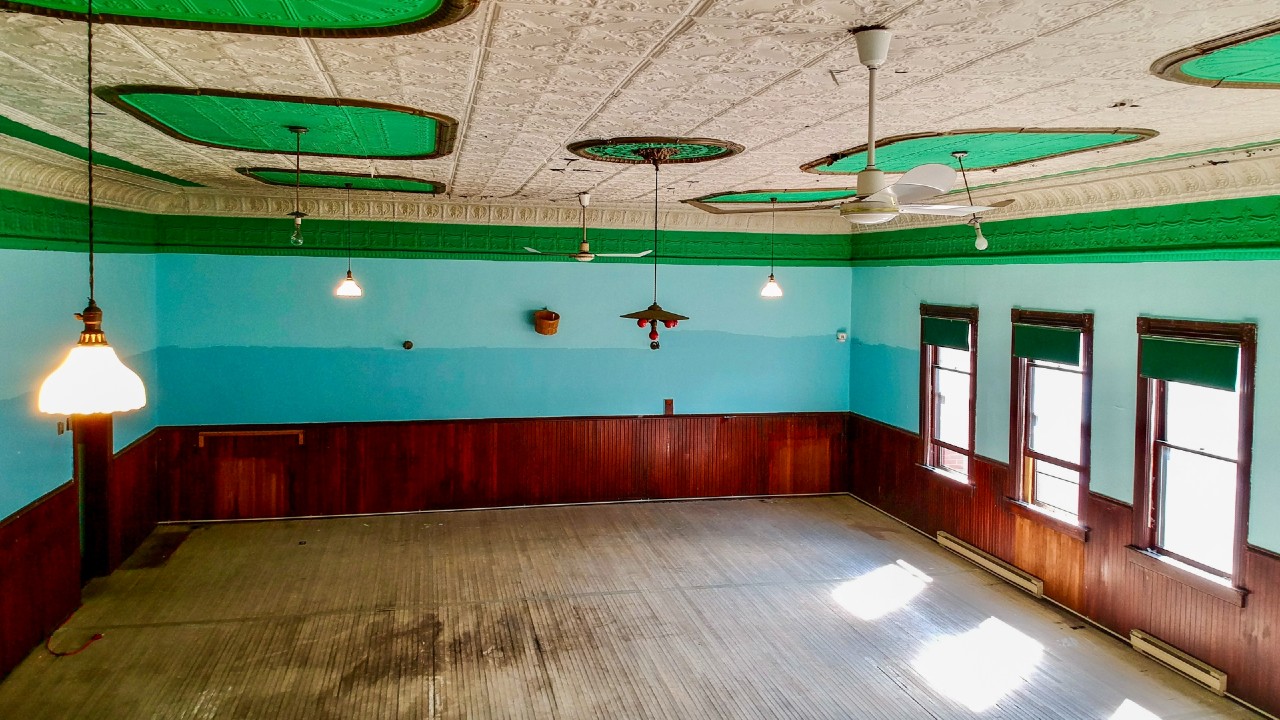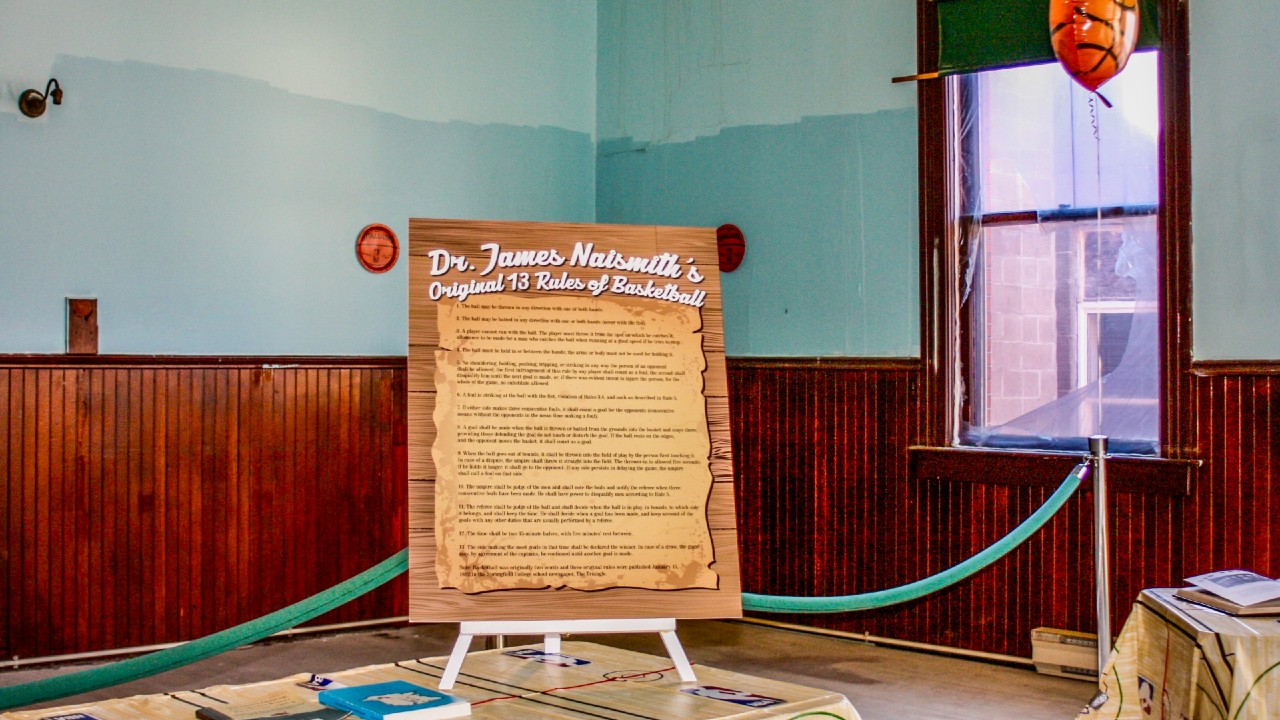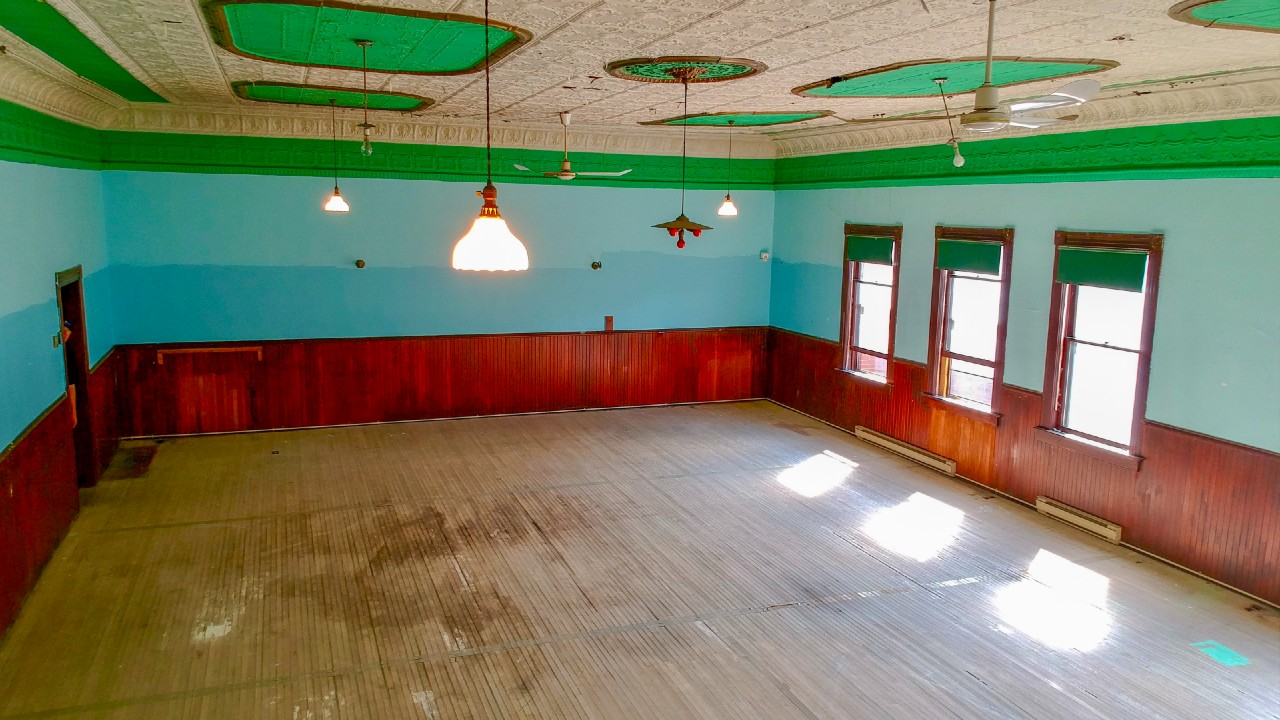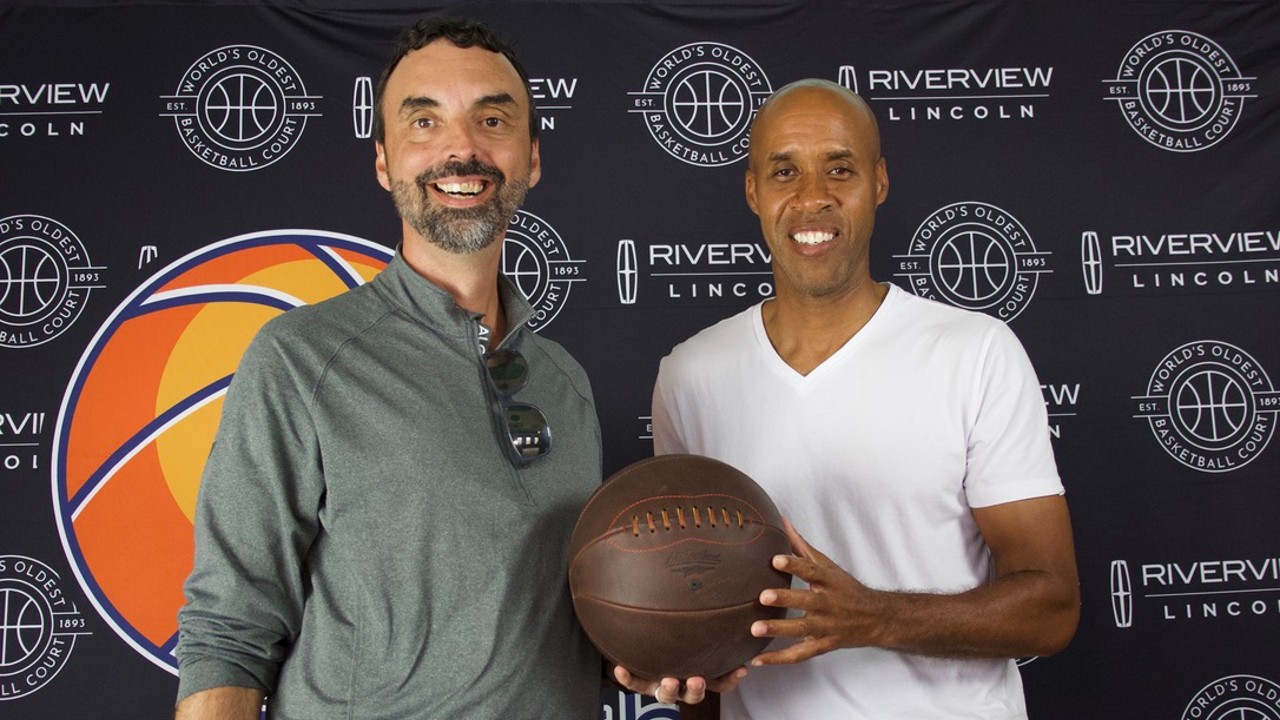
ST. STEPHEN, N.B. — Perhaps the most remarkable element of what is turning out to be a remarkable Canadian basketball story is how close it came to never being told.
All it would have taken for what has since been recognized as the world’s oldest basketball court to remain undiscovered was a steady breeze from the wrong direction, and chances are a piece of history would have burned to the ground, its significance lost forever to smoke and ashes.
But on the night in 2010 in St. Stephen, N.B., the weather was favourable for the volunteer firefighters called to battle the rapidly advance blaze in the old brick building at 8 King St. The structure was saved and the damage mostly superficial.
No one knows who or what started the fire. Working theories are that it could have been a patron coming home from a nearby bar being careless with a cigarette butt or some kids creating mischief and sparking one of the bags of donated clothes routinely left at the rear of the building.
But what kept the flames from engulfing the aged structure was the quick response of the town’s volunteer firefighters and a benign wind.
“It was moments from going up in smoke,” Tom Liston, the New Brunswick-born, Toronto-based tech investor and all-around basketball fanatic who has been one of the driving forces in securing St. Stephen’s — and Canada’s — place in basketball history, told me on a recent tour of the site. “That’s part of the reason it’s the oldest court — a lot of the other buildings burned down.”
Or were redeveloped. The site of the first ever game — where Canadian James Naismith introduced it to his students at the International YMCA Training Academy — has long since been integrated into the campus of Springfield College, as an example.
But the building in St. Stephen stood untouched over time. And when the owners came in after the fire to inspect for damages and pulled up the carpet in what was an upstairs storage room, they found a well-preserved hardwood floor. It occurred to someone that given the known history of the building — it had been a recruitment centre during the First World War, the site of New Brunswick’s first pharmacy, and a dance hall subsequent to being a YMCA — that some research might yield something interesting.
A local historian, Darren McCabe, was put on the case and he quickly zeroed in on the building’s history as a YMCA. A search of the newspaper archives revealed that a basketball game had been played in the fall of 1893 featuring a team from Calais, Maine — immediately across the border — and a team from St. Stephen.
Further research determined that Lyman Archibald — a native of Truro, N.S., and the then newly-installed YMCA director in St. Stephen — had played in the first basketball game ever played as a student of Naismith’s in 1891.
The direct lineage to the sports origins was interesting, but hardly headline-making news. It was clear that the St. Stephen’s Y wasn’t host of the first game in Canada, either, as that probably took place in Montreal or Toronto, albeit in buildings that had long ago fallen victim to the wrecking ball or fire.
That might have been as far as it went except for a dedicated group of locals who weren’t sure the former thrift shop was historically significant but weren’t sure it wasn’t either.
“To get the claim we were comfortable with took two or three years,” said Richard Holden, president of Canada First Basketball, the non-profit organization dedicated to restoring and enhancing the court and making it a cultural landmark for Southern New Brunswick. “We wanted the story to be the best it could be, but realistic and true.”
Eventually it was determined that the site of what had previously been considered the oldest existing basketball court in Paris had hosted its first game in December of 1893. Based on the clipping from the archives, the game in St. Stephen occurred two months earlier on Oct. 17, 1893.
At this point the small group of locals who had been investigating the potential of the find as a passion project were joined by a group of local business leaders under the banner of Canada First Basketball to create a business plan and identify realistic long-term objectives.
The initial goal was simple: raise funds to buy the building that was home to the court and the building adjacent to it, with an eye toward preserving the historic floor and using the additional space to create an experience centre — a cross between a museum of basketball history and a living, breathing event space that would showcase St. Stephen’s and Canada’s role as a bridge between the roots of the sport and game today.
The first phase was completed earlier this year when the first $1 million dollars of what is projected to be a $10 million undertaking was raised. The donors were some of the traditional sources for philanthropic work in New Brunswick, with both the Irving and McCain family foundations stepping up. Liston put his money behind his passion with a $200,000 donation of his own. The purchase of the properties was completed, and the engineering work required was undertaken.
What’s on display now is a picture that needs a frame and a caption to tell the full story but demands your attention regardless. The court itself bears little resemblance to what would be recognized as a basketball floor today, the faded hardwood aside. It’s shorter and narrower than the current dimensions of a regulation floor — at roughly 50 feet long and 30 feet wide it’s barely even half the size. Surprisingly, it’s on the second floor and the architectural significant decorative tin ceiling is low enough that a high-arching three-point attempt by national team star Jamal Murray would hit the roof before ever making it to one of the peach baskets nailed to the wall. But the hope is that by giving the discovery its proper context and place in the history of the sport, a small town in southern New Brunswick will earn its rightful place on the basketball map.
There are plans for an event space, educational components and hopefully some collections from the Canadian Basketball Hall of Fame. Some of the board members on Canada First Basketball were instrumental in getting a new arena and civic centre built and there is hope that it could be the venue for a Canada Basketball event or other competitions in the future, with the world’s oldest court as a backdrop, further cementing the ties between basketball’s past and future.
“What we have to keep in mind is from here to New York is one of the biggest basketball areas of the world, as is here to Toronto,” said Dave Ganong, a Canada First Basketball Advisor and the executive vice-chair of Ganong Bros. Ltd, Canada’s oldest chocolate company and St. Stephen’s largest employer. “And this is a central crossing point. In St. Stephen, there are three international bridges here as a matter of fact. So I think that the trick is, we need to get visibility, we need to let people know it’s here, once we get it here… I think it will have a significant impact on Southern New Brunswick and in terms of tourism. I mean basketball is one of the fastest growing sports in the world.”
But there is much work to be done, though organizers are committed to taking a long-term view.
“The biggest hurdle is ‘how fast do we go?’ because it’s easy to say, well, ‘let’s just blow it up and make it a big thing,’ but it’s going to take time because we have to raise more money, we have to do a whole lot of design to make it right, and then you have to build it,” said Holden. “You don’t want a big burst and then nothing.
“That’s why the phase one fundraising was so important. We were able to raise a million dollars that gave us credibility, allowed us to buy the buildings and start some museum work and know what it could be and then when people come here, it’s not just a bunch of dreams, it’s pieces of reality. … This is special as is, but to know what it could be, in addition to what it already is, is very important.”
Earlier this month the project took another step with the inaugural fund-raising and awareness-building golf tournament called ‘The Archie’ — a tip of the hat to Lyman Archibald — that brought together business leaders from across New Brunswick and elsewhere, spiced with some celebrities, including five Canadian basketball Olympians: Joyce Slipp and Dianne Norman, each Canadian hoops Hall-of-Fame inductees from Fredericton; three-time Olympian Miranda Ayim; Toronto Raptors broadcaster and member or the 2000 Olympic team, Sherman Hamilton; and former women’s Olympic team head coach Lisa Thomaidis, among other luminaries of varying wattage. (Full disclosure: I was one of the invitees to the golf event.).
The tournament was held at The Algonquin Golf Course, the historic seaside course rated one of Canada’s top 100 and the weekend began with oysters served before sunset on Friday on the 12th tee, with panoramic sunset views of Passamaquoddy Bay and the Maine shoreline in the distance. After a day of golf, a dinner was held at The Algonquin Resort in nearby St. Andrews-by-the-Sea, the quaint oceanside town that has hosted summer visitors long before basketball was played 20 minutes down the road in St. Stephen. The evening was hosted by hip-hop legend Maestro Fresh Wes, recently transplanted to nearby Saint John and one of the energizing forces behind the fundraiser that generated $80,000 for the cause. Yes, he performed Let Your Backbone Slide, live.
The weather was good, the food was good, the company was good, and the golf was good. The opportunity to walk through a piece of basketball history was tremendous. For those who have been working so hard to figure out how to make an accidental discovery have the lasting impact it deserves, it all combined to bring the past closer and a bright future near enough to touch.







